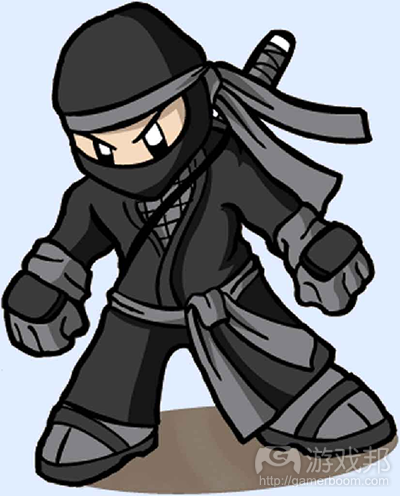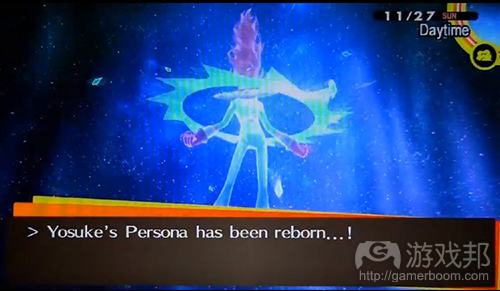如何通过玩法机制表现游戏角色发展
作者:Winston
在设计游戏机制的时候,要首先考虑你游戏的中心理念(或者机制)。游戏是关于砍杀的内容的吗?还是关于动作类型?无论你的游戏属于哪种类型,机制的目标就是传达这些主题,并允许玩家以主角的视角来玩游戏。实现这一效果的一个方法就是主角(玩家)的角色发展。这与故事情节中主题的变化相似(例如,“邪不胜正”的发展经过),你的主角可能也一开始只是一名初级刀客,或者只是正在执行首个任务的刺客,最县团级他们成了富有经验的刀客或精英杀手。
机制是一个传达这种变化的完美工具。在游戏初期,玩家对机制一无所知,或者所知甚少,游戏为他们提供一点关于如何操作的新手教程。注意:不要一开始就用海量信息轰炸玩家,并在游戏发展过程中手把手地逐步引导他们。玩家掌握了游戏的首个机制之后一会儿,他们会更为上手(他们学到了新技能);现在是时候引进新机制了,并迫使玩家学习。重复这个过程直到游戏结束为止,他们所学到的技能就会叠加起来并最终派上用场。
就像在电影中一样,所有的行动会推向高潮,游戏中的机制也应该引向玩家必须应对的最终测试。这可以是他们必须对抗的巨大boss,或者他们必须面对的另一名强大刀客。无论是哪种情况,这将会令玩家获得一种成长感。他们所经历的一切都要有助于之后挑战终极boss。玩家刚进入游戏时必须像一个新手,或者胆怯的刺客,但最终游戏要让他们获得一种成为高级刀客或超级杀手的感觉。以下就是一个更明显的例子:
作为一名刺客,你的师傅所传授你的第一个技能就是如何武装自己并变换武器——如何挥舞短剑这项最基本的武器。你第一次学到如何暗杀,即简单地跟随某人并适时摁下按钮将其干掉。接下来你可能就会学到更困难的技能,例如瞄准目标的关键点再下手,甚至还有可能学习如何抛剑。最终,你可能会学到如何与另一名剑客过招——-你学到不同的攻击类型,躲避和阻止他们的攻击。最后,你经历了这个学习过程后就会觉得自己真的成了一名剑客。
解琐玩法权限
另一个让玩家体验角色成长的方法是解琐权限。RPG很普遍使用这一方法,例如让玩家在到达一定级别后才能使用某种武器或盔甲,或者让你拥有足够资金后才能购买特定武器。这些关卡权限将成为角色发展的里程碑。玩家会觉得:“在经历这么多艰难困苦后,我终于可以从皮革盔甲升级到了更昂贵和更有重量的全套实战铠甲。我现在是一个更强更棒的战士了。”这个方法的问题在于游戏通常会令玩家在刷任务闯关或赢得赏金的过程中令玩家生厌。没错,玩家是必须为这些里程碑努力,但令他们经历重复的玩法却并不是一个好方法。
其实我们还有其他多种方法可以让玩家进入之后的关卡。只要这些里程碑还在,刷任务就并非必要之举。刷任务只能作为玩家为了到达下一个里程碑必须做的工作,但我们都知道多数人都讨厌刷任务,并且它也极为浪费时间。作为游戏设计师,如果你知道这一点,就会明白自己要做的就只是设置里程碑并创造玩家为实现这些里程碑必须去做的“工作”——-但要避免无聊的玩法。可以让玩家做一些任务而非不停地刷任务:
如果你的游戏是关于砍杀的题材,那就要允许特定功能“被锁定”,玩家必须完成任务才能赢得足够的点数(或金钱)才能解琐这些功能。这些任务包括一点故事情节(或者分支故事 ),例如“某人对自己的老板心怀怨恨,并雇佣你用病毒破坏办公室所有的计算机”。当他们完成这个任务后,就能赢得50个点数,这得以让他们解琐更多程序,从而让你执行更多困难的任务。
这种“里程碑方法”并不仅局限于战斗游戏和刷任务,你可以将其运用于许多种游戏(游戏邦注:例如爱情模拟游戏,侦探冒险游戏等)。这个方法的好处在于,它并不仅局限于主角本身。事实上,你还可以在其他角色身上运用限制来呈现发展。在《Persona 4》中,随着你提升同特定角色的社交联系,他们会在战斗中出手相助让你免于一死。随着你扩大社交联系,角色也会“进化”成为更强者,这表明你同该角色之间形成了一种不可逆转的关系。
这正是人们为何如此喜爱《Persona》游戏尤其是其中角色的一个原因。其机制有助于表现角色和形成关系。那些玩过这款游戏的玩家,可以看看《Persona 3》或《Persona 4》的结尾并注意一下其中解琐特定“权限”的设置如何表现结局。我所说的是你将boss的HP降为0的时候那个部分。我不打算向还没玩过这款游戏的玩家剧透太多内容,但这正是该游戏结局如些此强大的原因——它没有完全用过场动画来收尾,而是在过场动画和玩法之间实现了完美转场。他们使用这个解琐玩法限制的功能来展现最终发生的一个变化。
正如你所见,“权限”并不仅包含“关卡限制”。它可以是游戏中包含解琐新功能的任何机制变化。这种新功能可以是任何事物:例如一种召集新成员的咒语。机制是暗示游戏“变化”的一个强大工具,所以在使用方法上发挥创意吧,你会发现更多只有游戏能够传达故事的新颖方式。(本文为游戏邦/gamerboom.com编译,拒绝任何不保留版权的转载,如需转载请联系:游戏邦)
How to Convey Character Development Through Gameplay
Winston
When designing game mechanics, it is important to firstly consider what the central idea of your game is about (aka the themes). Is it a game about hacking? About action? Whatever your game is about, the goal of the mechanics is to convey these themes and allow the player to take the perspective of the main character (perspective taking). One way to achieve this effect is through character development of the main character (the player). Similarly to how themes change in the storyline (e.g. from ‘evil triumphs’ to ‘justice triumphs’), character growth is the same: your main character can start off by being a beginner hacker, or maybe a assassin doing his first mission and at the end of your game they become an experienced hacker or an elite killer.
elite ninja
The mechanics are a perfect tool to use to convey this change. At the beginning of the game, the player knows nothing or very little about the mechanics and they are provided with a little tutorial on how to play the game. Note: Don’t bombard the player with information on how to play the game at the very beginning, rather, teach them step by step as the game progresses. So let’s say the player learns about the first mechanic of the game, then after a while they become better at it (they learnt a new skill); now is the time to introduce a new mechanic into the game and force the player to learn it. Repeat this process until the end of the game, and the skills they learnt must add up and become useful in the end.
Just like how in a movie, all the moments build up into the climax, the mechanics in a game should also build up into the final test which the player must undertake. It might be a huge powerful boss they have to fight, or a hacker from the pentagon that they have to face, whatever the case is, this will allow the player to feel a sense of growth. Everything they’ve been through should allow them to challenge this boss. The player should start of the game feeling like a newb hacker or the timid assassin, but at the end of the game, they should really feel like they’ve become an expert hacker or an absolute killer. Here’s an example to make things clearer:
As an assassin, the first thing that your master teaches you is how to equip and change weapons – how to wield the most basic weapon which is the short sword. You first learn about doing stealth kills which simply involve just sneaking behind someone and pressing a button to kill them. Next, you might learn something more difficult such as aiming vital points in the target’s body and perhaps even learn how to throw the sword. Finally, you might learn how to engage in combat with another sword wielder – you learn different types of attacks, evading and blocking their attacks. In the end, you will really feel like a swordsman after this learning experience.
Unlocking Gameplay Limitations
Another way for the player to experience character growth is through unlocking restrictions. RPGs tend to do this a lot where you can’t weild a certain weapon or armor until you reach a certain level or you can’t buy certain items until you have enough money. These level restrictions will serve as milestones for character growth. The player will feel like: “After all this hard work, I went from wearing leather armor to this full plate mail which is much more expensive and heavier. I’m a much stronger and better fighter now.” The problem with this approach is that games tend to bore the players by making them just grind levels or gold until they reach the next level. Yes, it’s important that the player must work for these milestones, however, making them go through repetitive gameplay isn’t the way to go.
unlock restrictions
Instead, there can be several other ways that you can make the player work to advance to the next levels. So long as the milestones are in place, grinding isn’t necessary. The grinding aspect only serves as the work that the player must do in order to achieve their next milestone, however, we all know that most people hate grinding and it’s a huge waste of time. As game designers, if you know this much, the only thing you have to do is just set the milestones and create the ‘work’ that the player must do to achieve these milestones – but avoid things such as boring gameplay. Instead of grinding, they can do missions instead and here’s an example:
If your game is about hacking, then allow certain features to be ‘locked’ and the player must complete tasks in order to earn enough points (or gold) to unlock these features. The tasks can include little story snippets (or side stories) such as ‘a man is angry at his boss and wants to get him back by hiring you to wreck all the workplace computers with a virus.’ Once they finish this task, they might earn 50 points, and this allows them to unlock a better hacking program which in turn allows you to do more difficult missions.
So this ‘milestone approach’ isn’t just limited to fighting games and grinding levels, you can do it for many sorts of games (possibly every sort of game ranging from love simulator to detective adventure games). And the good thing about this approach is that, it isn’t limited to just the main character itself (i.e. the player). In fact, you can use restrictions to show growth in the other characters. In Persona 4, as you improve your social link with certain characters, they will start doing things such as taking a lethal blow for you during battle so you don’t lose. As you max your social link, their Persona ‘evolves’ into a more powerful one, signifying an irreversible bond that has been formed between you and that person.
Persona 4 Yosuke max social link
This is the reason why people loved the Persona games so much and especially the characters. The mechanics aided in the portrayal of character and bonds formed. And for those who’ve played the game, look at the ending of Persona 3/4 and notice how the unlocking of certain ‘limitations’ aided in portrayal of the ending. I’m talking about the part AFTER you get the boss’ HP down to zero. I won’t spoil anything for those who haven’t played the game, but this is what made the ending so great – instead of the ending being entirely cutscenes, it transitioned very well between cutscene and gameplay. They used this feature of unlocking gameplay limitations in order to portray one of the final changes that occurs.
So as you can see, ‘limitations’ doesn’t just involve ‘level limitations’ otherwise I would’ve called it that. It can be any type of mechanical change in the game that involves unlocking a new feature. The new feature can be absolutely anything: from a new spell you learn to having a new group member. Mechanics are a great tool to use to imply ‘change’ in a game, so be creative on how you use it and you’ll discover novel ways to portray narrative that can only be possible in our medium.(source:gamingpoint)
下一篇:独立开发者应谨慎对待合同问题










































 闽公网安备35020302001549号
闽公网安备35020302001549号